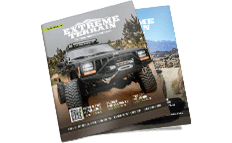2016 Toyota 4Runner Accessories and Parts 2016 Toyota 4Runner accessories and parts come in a range of functions, materials, manufacturing processes, quality standards, compatibility considerations, and defining performance capabilities.
Parts and Their Functions
The intricate scope of these parts encompasses elements such as engines and engine parts, chassis and body parts, braking systems, transmission parts, electrical systems, and wheels and tires, among others. Each serves a critical purpose to ensure the vehicle’s optimal performance, efficiency, driving safety, and longevity of operation.
Engine and Engine Parts
For instance, the engine, comprising a myriad of parts including pistons, valves, spark plugs, and a multi-material build of metals like steel and aluminium, is at the heart of the vehicle's power generation. It is crafted via techniques like machining and casting to meet precise tolerances that ensure optimal functionality and conformity to the highest quality standards like ISO, QS, and VDE.
Braking System
Toyota 4Runner parts like the braking system, composed of brake pads, rotors, calipers, and hydraulics, are vital for maintaining vehicular safety. Brakes are typically made of high-carbon steel and carbon-ceramic composites, and subjected to heat treatment for enhanced strength and durability.
Suspension System
Meanwhile, the suspension system, including parts like shocks, springs, and sway bars, is key to ride quality and vehicle control, and is manufactured using advanced processes like welding and forging.
Transmission
The transmission, consisting of the gearbox, differential, and drive shaft, is crucial in translating the engine's output into measurable road performance. Transmission parts are usually made from strong and wear-resistant materials like hardened steel and are manufactured through processes like extrusion and milling to ensure durability under high stress.
Electrical Systems
Electrical systems, featuring parts like the battery, alternator, starter motor, and sensors, are the lifeline for vehicle operability, assisting in functions like ignition, fuel injection, and electronics operation.
Wheels and Tires
Wheels and tires, typically made of forged aluminium or steel and rubber, respectively, are integral to vehicle traction and handling. Their manufacturing processes include casting or forging and vulcanization.
Compatibility Considerations
Compatibility considerations are crucial when selecting parts to guarantee proper fitment and performance. Compatibility factors include the specific make, model, and year of the vehicle, as well as the type of engine and drivetrain. Also, variables such as vehicle mileage, operating conditions, and maintenance history profoundly impact part selection and longevity.

















